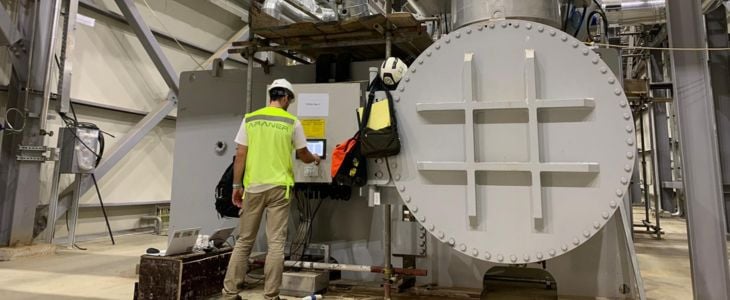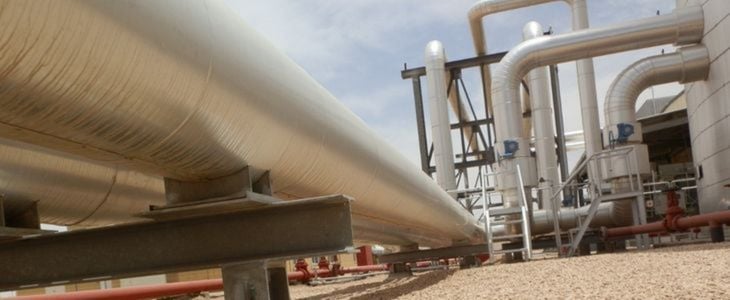Wastewater heat recovery systems represent a pivotal initiative in today's sustainable landscape, offering a solution to a number of both environmental and economic challenges.
In a context of increasingly conscious resource utilization, innovation applied to wastewater heat recovery is allowing for important steps towards the pursuit of energy efficiency.
By harnessing the latent thermal energy present in wastewater, these systems are allowing industries and municipalities to dramatically reduce their reliance on conventional (and more polluting) energy sources.
As such, wastewater heat recovery emerges as it’s able to turn a traditionally overlooked byproduct into a valuable resource. By repurposing thermal energy that would otherwise go to waste, these systems effectively diminish the environmental impact of industrial processes. In fact, they’re yet another important pillar for circularity and resource conservation, untapping unused thermal energy via their alliance with industrial heat pumps.
What’s more, the economic benefits of these systems are undeniable, due to their reduced energy consumption and enhanced process efficiency. As such, investing in urban wastewater treatment represents a smart decision that not only pays dividends through reduced operational expenses but also advances towards organizations’ commitment to sustainable practices.
Today, half of the EU’s energy consumption is related to heating and cooling. As such, the transition towards a greener economy and environmental practices must necessarily include a decarbonization of heating and cooling.
Enter the world of low carbon heat recovery technologies in urban wastewater heat recovery.
What is wastewater heat recovery
Wastewater heat recovery is based on a simple but brilliant premise: to use the heat content present in the huge quantities of heated water that end up in city sewers every day.
This warmed water in sewers is typically in the range of between 25 to 30°C when discharged, and between 10 to 12°C by the time it reaches wastewater treatment plants (WWTPs).
Through the right system, the heat contained in urban sewage can be reused by capturing and utilizing the thermal energy present in it. This heat can then be recovered and reused for various purposes, such as space heating through district heating systems, as well as water heating or industrial processes.
Across the globe, successful wastewater heat recovery systems have already been developed. Such is the case of the district heating initiative in Stockholm, Sweden, which has reduced the city’s overall energy consumption and carbon footprint. Another successful example is Vancouver’s Olympic Village (Canada). Built for the 2010 Winter Olympics, it incorporated wastewater heat recovery as part of its sustainable design.
How does wastewater heat recovery work
The process for wastewater heat recovery can be explained in the following steps:
- The heat present in wastewater from industrial processes or sewage is extracted using heat exchangers, which transfer the thermal energy to a separate heat transfer fluid.
- Then, the extracted thermal energy is transferred to a secondary system for reuse. As we’ve seen above, this can involve a number of applications: from heating, to heated water for buildings and pre-heating incoming water for industrial processes.
- After heat extraction, the treated wastewater is then discharged. If needed, it can also be further treated to meet environmental regulations. Finally, the heat transfer fluid is circulated back to the heat exchanger to repeat the process.

Benefits of wastewater heat recovery
Energy efficiency
This approach to urban wastewater treatment represents a crucial breakthrough in reducing dependence on conventional energy sources, as well as improving overall energy efficiency through the use of cutting-edge industrial heat pumps. By capturing and reusing thermal energy that would otherwise be wasted, the overall energy efficiency of the process is enhanced.
Cost savings
Recovering heat from wastewater (which would otherwise be unused) means there’s a reduction of the overall energy consumption and, consequently, costs related to energy.
Environmental benefits
These systems also play a crucial role in lowering greenhouse gas emissions associated with energy production, as they provide an alternative to burning fossil fuels and other unsustainable practices.
In fact, by maximizing the use of thermal energy that would otherwise be wasted, wastewater heat recovery advances towards circular energy models and contributes to resource conservation.
Industrial heat pumps and wastewater heat recovery: the path towards the decarbonization of heat
After having reviewed some of the basics of wastewater heat recovery, it’s worth noting that heat in wastewater cannot be directly employed. This is because, generally, temperatures of wastewater are lower than necessary.
This is precisely where industrial heat pumps come in. These pieces of equipment are able to raise the temperatures of the extracted heat energy, effectively converting it into functional heat.
In other words, while wastewater is typically at a moderate temperature, it represents an ideal heat source for industrial heat pumps. This is because heat transfer fluids (or refrigerants) evaporate at low temperatures.

At the same time, they bring in the additional advantage of being able to reverse their cycle during the summer, so that the heat pump system can provide cooling in specific conditions.
Because temperatures in sewage water remain relatively constant across different seasons (as opposed to ambient air or fresh water), the combination of heat pumps and wastewater heat recovery represents a consistent source for energy supply.
Additionally, the benefits of this approach to urban wastewater treatment align with the environmental advantages of heat pumps. For instance, industrial heat pumps present outstanding energy efficiencies, with an average COP of between 3 and 9. This means that for every unit of electrical energy consumed, they provide between 3 to 9 units of thermal energy in return.
In the field of industrial processes, this is a crucial step forward towards decarbonization. Many of them require high-temperature heat, from drying to distillation and other diverse chemical reactions. Typically, these have been achieved by using conventional, carbon-intensive sources. However, wastewater heat recovery, coupled with industrial heat pumps, boosts temperatures of the recovered heat to levels suitable for these processes.
The same can be said about cutting-edge, 5th generation district heating initiatives in urban environments, which also benefit from this system’s higher energy efficiency and decarbonization.
All in all, wastewater heat recovery represents an integrated approach for the transition towards cleaner and more sustainable energy sources.
At ARANER, we work to provide companies and organizations with a way forward in the decarbonization of heating. Our state-of-the-art industrial heat pumps (including options such as water-to-water heat pumps and seawater heat pumps) are a crucial addition to many of the world’s most innovative approaches to decarbonizing heating. All while ensuring that projects make the most of their particular needs and potential, as well as achieving cost-effectiveness.
Want to learn more about how we can help you design and implement your own decarbonized district heating system? Get in touch with us and speak to our team.










